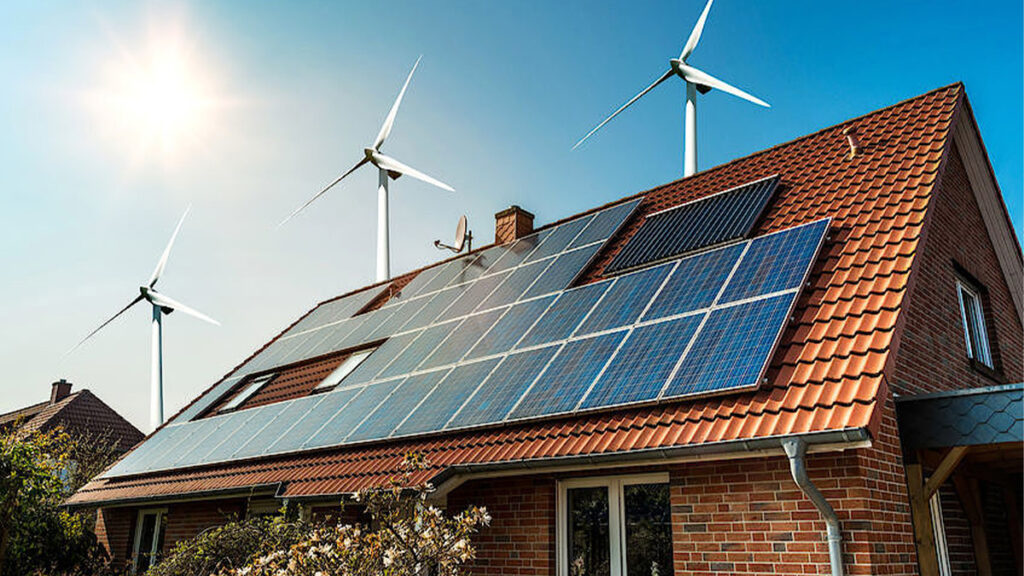In the context of todays global energy transformation, the industrial and commercial rooftop distributed photovoltaic power generation system has become an important force to promote green and low-carbon development with its advantages of clean, renewable and nearby utilization. For many enterprises and industrial parks, the installation of rooftop photovoltaic can not only effectively reduce the cost of electricity and improve the corporate image, but also to respond to the national call for energy conservation and emission reduction and achieve sustainable development. However, an efficient, safe and lasting industrial and commercial rooftop photovoltaic system, its design link is very important, involving site selection layout, module selection, structural design, electrical safety, operation and maintenance management and other aspects.

PART. 01 Project preliminary evaluation and site selection layout
1. roof condition assessment
● Roof types: industrial and commercial roofs are diverse, including flat roof, inclined roof, color steel tile roof, etc. Different types of roofs have different installation requirements for photovoltaic systems. Flat roof installation is relatively simple, but waterproof and load-bearing; inclination and orientation to maximize power generation efficiency; special attention to color steel tile roof.
● Weight-bearing capacity: the weight of the photovoltaic system cannot be ignored, and it must ensure that the roof structure can withstand additional loads, and should be strengthened if necessary.
● Occlusion analysis: use professional software for shadow analysis to avoid occlusion caused by surrounding buildings and trees, and ensure the maximum solar radiation received by photovoltaic panels throughout the year.2. Geographic location and climate factors
● Sunshine duration and radiation: installation in areas with sufficient sunshine and high radiation, which is directly related to the power generation of the photovoltaic system.
● Wind speed and wind direction: considering the roof height and the surrounding environment, assess the impact of wind pressure on the stability of the system, especially in coastal areas and high wind speed areas.
● Extreme weather: such as rainstorm, hail, lightning, etc., corresponding protective measures should be taken to ensure the safe operation of the system.
PART. 02 component and system selection
1. Photovoltaic modules
● Efficiency and power: High efficiency components can generate more electricity in a limited area, but need to balance cost and return on investment.
● Temperature effect: high temperature will reduce the efficiency of components, it is particularly important to choose high temperature resistance, low attenuation rate of components.
● Brand and quality: give priority to choosing well-known brands to ensure the long-term stability of components and after-sales service.
2. Inverter
● Type selection: centralized inverter is suitable for large-scale system, low cost; group series inverter is high flexibility, strong adaptability, especially suitable for more shadow occlusion scenarios.
● Efficiency and reliability: high efficiency inverter can reduce energy loss, and intelligent monitoring function helps to find and solve problems in time.
3. Bracket system
● Adaptability: Select the appropriate bracket according to the roof type to ensure that the installation is stable without affecting the original function of the roof.
● Regulation: some supports have the inclination regulation function, which can be adjusted according to the seasonal changes to optimize the power generation efficiency.

PART. 03 Structural design and safety considerations
1. Structural design
● Foundation design: ensure that the support foundation is firm to avoid structural deformation or collapse caused by wind pressure and snow load.
● Drainage system: keep the original drainage of the roof unblocked to avoid the damage caused by water accumulation to the photovoltaic system.
● Lightning protection grounding: the lightning protection system is designed according to the national standards to ensure the safe operation of the system.
2. Electrical safety
● Cable selection and laying: select weather-resistant and flame-retardant cables, reasonably plan the cable path, reduce loss and facilitate maintenance.
● Overvoltage protection and grounding: install the overvoltage protection device to ensure that the system is free from power grid faults; improve the grounding system to ensure the safety of personnel.
● Monitoring system: integrated intelligent monitoring system, real-time monitoring of the operation status of the system, timely detection and processing of abnormalities. PART. 04 Analysis of economic benefits and financing strategy 1
● Cost estimation: including the full life cycle cost of equipment purchase, installation and construction, operation and maintenance management, etc.
● Income forecast: calculate the expected income based on the local electricity price, subsidy policy, system power generation and other factors.
● Sensitivity analysis: to evaluate the project risk by considering the uncertainties such as electricity price change and subsidy regression.
2. Financing strategy
● Government subsidies and tax incentives: make full use of the national and local government subsidy policies to reduce the initial investment costs.
● Bank loans and financial leasing: explore financial products such as low-interest loans, financial leasing and other financial products to reduce the financial pressure of enterprises.
● Third-party investment and cooperation: cooperate with the energy service providers, adopt the contract energy management (EMC) and other modes, and share the benefits and risks.

PART. 04 Operation and maintenance management and continuous optimization
1. Daily operation and maintenance
● Regular inspection: regular inspection of photovoltaic panels, supports, cables, etc., timely cleaning of dust, to ensure the efficient operation of the system.
● Fault handling: establish a rapid response mechanism to repair the system faults in time and reduce the power loss.
● Data monitoring: use the intelligent monitoring system to analyze the data in real time and optimize the operation and maintenance strategy.
2. Performance optimization
● Cleaning and maintenance: according to the regional climate characteristics, make a reasonable cleaning plan, keep the photovoltaic panels clean, improve the efficiency of power generation.
● Component upgrade: With the progress of technology, timely consider upgrading and replacing the old components, and adopt more efficient products to improve the overall performance of the system.

